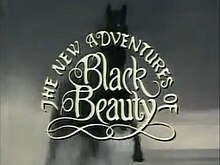Chapter 29: Cockneys
byChapter 29: Cockneys paints a vivid picture of how ignorance and speed-focused driving endanger horses every day. Black Beauty observes how some town-bred drivers—often referred to as Cockneys—treat horses not as living beings but as mechanical tools. These drivers are known for pushing horses at a relentless pace, completely disregarding the terrain, traffic, or fatigue the animals may feel. They rarely use the brake going downhill, allowing the carriage to press against the horse’s shoulders. This reckless handling puts immense pressure on the animal’s joints and causes unnecessary suffering. Black Beauty contrasts these drivers with experienced countrymen who understand how to guide a horse with a steady hand and clear judgment. He expresses that even a strong horse is vulnerable under the hands of someone who confuses force for control. These city men, lacking the sensitivity gained through real horsemanship, risk the lives of both horse and rider.
A tragic incident involving Rory, one of Beauty’s companions, drives the point home. Rory was matched with a harsh driver who cared only for speed and appearances. One busy morning, while racing to outpace another cab, the driver refused to slow despite a sharp corner ahead. Rory, unable to manage the turn, collided with another carriage and was thrown hard against the pavement. Though his injuries were not fatal, they ruined his ability to work in lighter harnesses. He was sold soon after—to a coal merchant. The coal trade, known for its unyielding demands and grueling pace, is considered by many horses to be a dreaded fate. Rory’s fate haunts Beauty, who knows that all of it could have been avoided with patience and care. In Rory’s downfall lies a warning—not just for drivers, but for anyone responsible for the welfare of others.
Later, Beauty is paired with Peggy, a mare whose broad chest and short legs make her strong but unsuited to match strides with taller horses. Because she couldn’t keep pace, she was constantly whipped and shouted at. Over time, Peggy developed an unnatural, awkward trot—an exhausting, high-stepping motion she used to avoid the lash. Though her spirit remained intact, the mistreatment took a toll on her body. Beauty could sense how hard she tried, but the expectations were never adjusted to suit her form. Peggy’s story reflects the cruelty of forcing horses into work they’re not physically built for. Instead of adapting the workload, some drivers simply increase punishment. It’s not weakness in the horse—it’s the failure of humans to listen and understand.
Black Beauty’s final encounter in this chapter is with a young, nervous gelding who flinches at sudden sounds and shadows. Rather than being helped through this fear, the young horse had always been punished for shying. Over time, he began to associate fear not only with the noise but with the rider’s reaction. The punishment, meant to correct him, only deepened his anxiety. Beauty listens to his companion’s trembling voice as he recalls lashes that followed every flinch, even though he never meant harm. This story cuts deep—revealing how fear, when mishandled, becomes trauma. Horses, like people, learn through trust. If that trust is broken by harsh discipline, fear can become permanent. The young horse’s tale stands as a quiet plea for empathy and patience in a world too quick to react.
Together, these stories form a powerful commentary on the effects of ignorance and harshness. They show how well-meaning horses are pushed into injury, fear, and exhaustion not because of failure on their part, but because their handlers never paused to understand their needs. Sewell uses these narratives not to dramatize, but to educate—reminding readers that compassion must be coupled with knowledge. A horse’s breed, build, and temperament matter, and responsible care means tailoring work to the animal’s ability. The chapter doesn’t just criticize bad practice—it offers a vision of what could be better. When drivers take time to learn, listen, and adjust, horses respond with trust, strength, and loyalty. In this, Sewell argues that true mastery lies not in control, but in connection. And it’s that connection that ultimately protects both horse and human.

